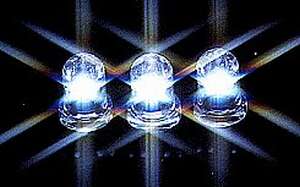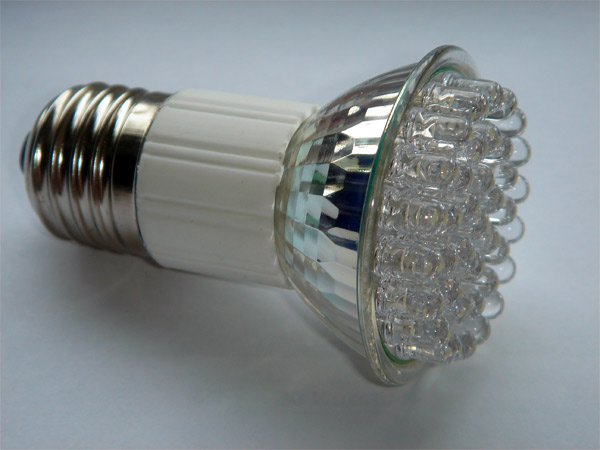Local Area Network with LEDs (800 Mbps)
 It turns out that the most common LEDs are quite suitable for transmitting data at high speeds. You just need to write software to modulate the flicker of the LED and put the photodetector on the “other end of the line” - that’s the finished channel VLC (Visible Light Communication), that is, the communication line in visible light. It looks like fiber, only over the air.
It turns out that the most common LEDs are quite suitable for transmitting data at high speeds. You just need to write software to modulate the flicker of the LED and put the photodetector on the “other end of the line” - that’s the finished channel VLC (Visible Light Communication), that is, the communication line in visible light. It looks like fiber, only over the air. Engineers from the Fraunhofer Institute of Telecommunications (Berlin) recently set a new record for data transfer speed in the VLC channel using four-color LEDs: 800 Mbit / s . They managed to raise a workable WLAN, where each node saw neighbors within a radius of about 1.8 m.
Interesting in this technology is that similar LEDs are used in the construction of household white-light LED bulbs.

LED Bulb E27 JDR
Thus, the lighting fixtures in the house (floor lamps, chandeliers, Christmas tree decorations) can theoretically become part of such a network if they begin to flicker according to the correct protocol. The practical value is that such modems do not generate radio emissions, so they can be used as an alternative to WiFi in hospitals, airplanes, etc. Such flicker is not perceived by the human eye.
The inventors promise to arrange a practical demonstration of the technology at the IFA 2011 Consumer Electronics Show in Berlin (September 2-7, 2011). At their stand (Halle 11.1, Stand 8) they will use the LEDs to transmit real-time video.
